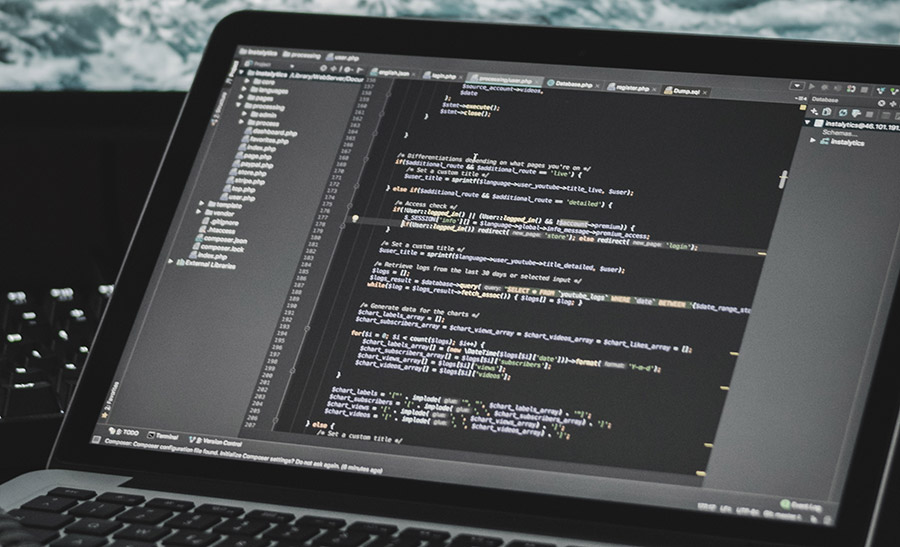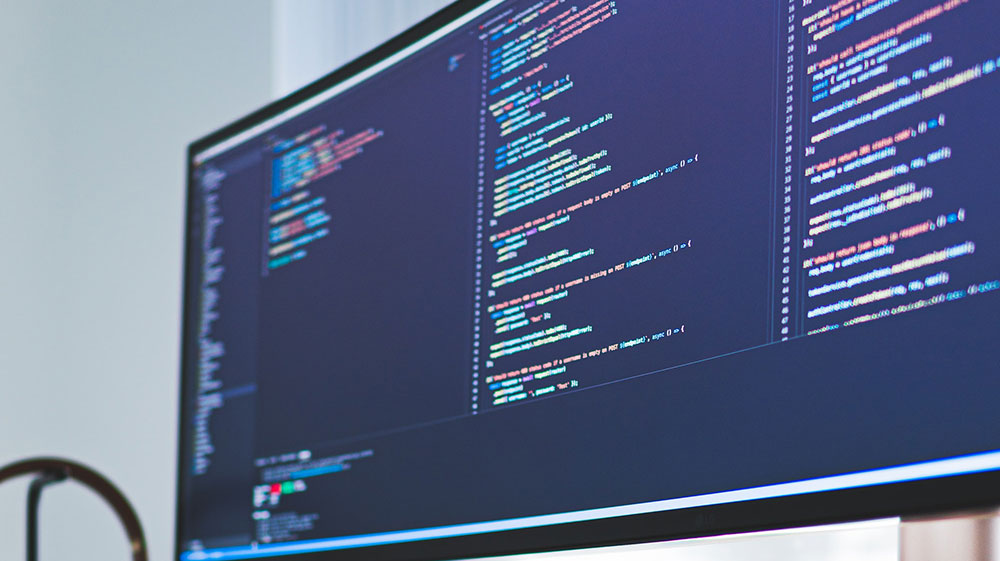Embarking on the journey of software creation is akin to steering a ship through stormy seas—it demands strategy, precision, and phases. Without a reliable compass, a.k.a. the 7 phases of SDLC, you’re sailing blindfolded. Now, envision mastering these phases, transforming an intangible idea into a robust, user-friendly software product.
That’s what’s in store here. Discover how these meticulously crafted stages lay the groundwork for stunning software that stands the test of time.
From breaking ground with a precise requirements analysis to steering through the choppy waters of coding and testing, to eventually docking at the final port of maintenance and support.
Sail with me; let’s decipher this cryptic map together. We’ll delve deep into each phase, ensuring no stone is left unturned, no bug unnoticed.
You’ll disembark armed with knowledge, ready to take on any software development challenge that dares to cross your path. This isn’t just a cruise; this is the voyage of shrewd development—distinct, strategic, and indispensable.
An Overview of the SDLC Process
The process starts with planning and ends with the maintenance phase. This includes tasks such as requirements analysis and design.
Other parts include coding, testing, and deployment as well as specialized services such as back end development services. Generally, SDLC models assist firms to meet their deadlines and manage their budgets.
It also allows decision-makers to predict if their software continues to be a worthwhile effort.
Therefore, many compare SDLC to the Agile or Waterfall approaches. As a result, a great number of enterprises utilize a hybrid approach.
What Are the 7 Phases of SDLC?

To finish a development process for a software project you’ll need all of the divergent phases of SDLC. Hence, apply all of the seven SDLC phases in succession.
However, you can insert small alterations depending on the chosen model.
First Phase: Preparation and Analysis Stage
Preparation is the most essential step in the system development process. The organization’s software developers perform the analysis needed to finish this phase of SDLC.
The preparation stage comprises strategic objectives, such as:
- Assets assignment
- Scope planning
- Project scheme
- Value projections
- The required equipment
The requirements analysis assesses the features and capabilities of the software. Also, it inspects its users and usability methods.
So, it considers the target audience and the business objectives that the software aims for. Additionally, the analysis typically includes a review of the existing system.
In short, the planning stage includes design projections, fee forecasts, and provisioning.
Project managers and development personnel collude with all project teams when making decisions. Working together, they can ensure all security solutions go live in an effective manner.
Second Phase: Provision Characterization
The first stage should result in a detailed validation of the final product. Then, consumer analysts approve the product’s requirements. For that, they use the Software Requirement Specification document.
The SRS document lists the requirements of the software, hardware, and other necessary components. To that end, it covers all of the system development life cycle phases.
Programmer personnel can:
- Interpret any example system prerequisite
- Coke up with substitutes for the existing exemplars
- Identify customer needs and preferences
Third Phase: Creation of Architecture
This stage houses the process of defining a structured solution. This solution has to meet all the technical and operational requirements. Hence, this architecture is the foundation of any software system.
The software architects utilize advanced techniques at this stage. For example, analysis of the current system, use-case diagrams, and database diagrams.
You can divide the third stage process into several components:
- User interface: Analysis of how consumers interconnect with the software. Also, analysis of how well the software counters certain inputs
- Coding: Consideration of all the aspects concerning programming language and all possible customizations
- Architecture: Consists of business customs, templates, total design, and programming languages
- Platforms: Configures the platform on which the software system will be built on
- Connections: An overview of the techniques for interacting with third parties
- Safety: Detailing the treads made for system security. This process can contain SSL traffic encryption, password protection, and user credentials protection
The next step is creating a prototype version of the software system. The prototype should include the basic features of the app. Also, it should comprise some mock data and interactions.
Prototyping is an important step in the software development process. It allows developers to test the design and functionality of the app. Then, you can resume the final steps.
Additionally, it can also provide potential users with a better notion of the app’s features. This helps reduce the risk when the final product goes live.
Finally, all stakeholders can inspect and review the application. They can provide feedback on how well it meets the desired requirements. Also, they can suggest any changes for boosting its efficacy. Next, the development teams review those points. Once the changes are complete, the application is ready for final testing and launch
Fifth Phase: Software Testing Stage
Testing is the process of evaluating a system or its components. As such, it aims to uncover whether it satisfies the specified requirements. In software engineering, testing is an important component of quality assurance. This represents the ultimate review of specification, design, and coding.
Testing the entire system helps to identify errors. At the same time, it detects gaps or missing links that bog down the product. Plus, it helps to ensure that a system meets its end-user requirements and achieves its goal.
Sixth Phase: Distribution
After the software development is complete, the test and QA process begins. For that, engineers must possess excellent problem-solving and communication skills. More often than not, they’ll need to provide technical support and troubleshoot issues.
Other than that, they’ll need to answer questions about the developed system. They should also help train customers on how to use and optimize the app. Additionally, they need to ensure the software remains up-to-date. Another task will be managing user accounts and performing other administrative tasks.
Thus, this stage involves moving the product from development into a production environment. Hence, you need to verify that the product is working correctly at this point.
Furthermore, the IT team must understand how the APIs in place support the product. On that note, they should know how to monitor and support the APIs. Lastly, IT employees need to be certain that all changes serve to improve the app’s quality.
Seventh Phase: Software Processes and Upkeep
The operation and maintenance phase is the last one in the software development life cycle.
This development life cycle (SDLC) includes regular upkeep. Commonly, the maintenance includes bug fixes, security updates, and other improvements.
Depending on the type of software, users may also need to perform regular backups and optimization.
The goal is to ensure that the system works as expected and meets the user’s requirements. This phase also involves updating the system to make sure it keeps up with an evolving market. This includes making changes to the software code and ensuring that the system is secure and reliable.
Iterative development models are a great way to build products in a way that allows for efficient, continuous improvement.
These models focus on the idea of breaking down a project into several chunks. Hence, iteratively adding new features and improvements over time is one of the model’s goals.
It allows for the product to be developed in a way that it can quickly adapt to customer feedback and other market conditions.
FAQ On What Are The 7 Phases Of SDLC
What Exactly are the 7 Phases of the SDLC?
Dive in, and it’s clear as day. These phases are the backbone of software creation, a cycle that begins with a spark—the Requirements analysis. You then sketch the blueprint, known as System Design. Sequential magic happens as you code, test, and deploy. Finally, we circle back, maintaining and refining.
Why is Each Phase Critical in SDLC?
Each phase is a cog in the clockwork of software engineering. Skipping one is like building a house without a foundation—risky business.
From planning to deployment, each stage minimizes errors, streamlines processes, and essentially saves time and dollars. They’re checkpoints ensuring we’re on track, delivering high-quality software to users.
Can the Phases of SDLC Overlap or be Repeated?
Ah, the beauty of models like Agile shatters the myth of rigidity. Overlap and repetition? Commonplace. We’re talking iterative cycles, constant evolution with Agile and Scrum methodologies. Refinement isn’t just welcome; it’s part of the process—for better, user-approved software.
What are Some Examples of Activities in the SDLC’s Requirements Analysis Phase?
Think of it like a detective’s work. You’re gathering clues—user requirements, plugging into stakeholder needs, and translating that into technical speak. It’s requirements gathering fully loaded—conducting interviews, creating user stories, and laying out use cases to ensure every need is met.
During the Design Phase, What are Key Considerations?
Visualizing the final product, we architect software structure, considering system design, databases, and user interfaces. Scalability, reliability, and security take center stage too, ensuring the blueprint is foolproof. Think big picture, but detail-oriented—it’s a balancing act of technical skill and foresight.
In Which Phase is Coding Carried Out, and What Does it Involve?
Enter the coding stage. Programmers in their element, transforming designs into functional software. They’re tapping away at keyboards, crafting the intricate ballet of code in various programming languages—the lifeline of any software.
This phase is meticulous, requiring precision and a passion for problem-solving.
How Important is the Testing Phase in SDLC?
It’s a non-negotiable, the guardian phase of the product’s integrity. Testing uncovers the invisible, seeking bugs, performance issues, and security vulnerabilities. It’s rigorous—unit testing, integration testing, and user acceptance testing all form part of this crucial pilgrimage toward reliability.
When is the Software Released in the SDLC?
The deployment stage is showtime. It’s when developed software meets the real world. After passing all tests, the application is released into the production environment, ready for user interaction. Deployment can happen in stages or all at once, yet each deployment strategy aims for minimal disruption.
What Does Maintenance Mean in the Context of SDLC?
Post-launch isn’t goodbye. Maintenance is like the software’s guardian angel, keeping things smooth. It involves regular updates, fixing issues that surface, and refining the system to align with changing user needs. Think of it as the stage that ensures the software lives a long and healthy life.
How is the SDLC Evolving with Modern Software Development Practices?
The SDLC isn’t set in stone, it’s alive—morphing with tech advancements. DevOps practices, continuous integration, and deployment have entered the chat, blurring the lines between development and operations.
We’re seeing a push towards faster, more collaborative cycles that champion a seamless, user-centric approach to building software.
Conclusion
Navigating through what are the 7 phases of SDLC is like piecing together a high-stakes puzzle. Each component, a distinctive phase, collectively creates a masterpiece—robust, functional, and user-focused software.
- We kicked off by charting the terrain with a requirements analysis, pinpointing every need.
- Swiftly moved into designing a resilient, scalable system design.
- Under the glow of monitors, coders translated blueprints during the implementation phase.
- Testing, a relentless quest to iron out kinks, kept teams on their toes.
- Deployment was a celebration—a ceremonial release into the wild.
- We then transitioned to maintenance, ensuring the software’s longevity.
Let’s wrap this up. Remember, the lifeblood of successful software isn’t in the code alone; it’s an intricate dance between phases, constant adaptation, and staying in lockstep with user expectations. It’s not just a cycle; it’s an evolution—a relentless pursuit of perfection. This is the art and science of software development, laid bare and beautiful.
If you enjoyed reading this article on what are the 7 phases of SDLC, you should check out this one about financial software development companies.
We also wrote about a few related subjects like business pivot examples, financial projections for startups, startup press kit examples, nearshoring, Berlin startups, and mobile app makers.
- Reasons Why You Need a Reliable Host for Your Website - April 26, 2024
- Animate Your Ideas With Creative Apps Like FlipaClip - April 25, 2024
- Ruby’s Realm: What is Ruby Used For? - April 25, 2024









